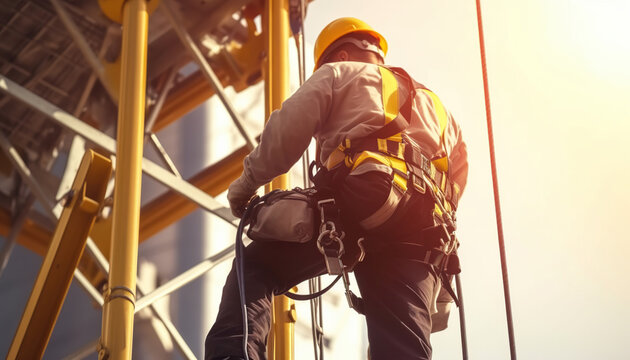Avoiding Common Mistakes in Working at Heights: Essential Training Strategies
Working at heights can be a dangerous task if proper precautions aren’t followed. With the potential for serious injuries, it's crucial to understand the common mistakes workers make and how effective training can mitigate these risks. In this blog post, we’ll highlight frequent errors, such as incorrect equipment usage, lack of risk assessment, and failure to adhere to safety procedures, and discuss how structured Working at Heights Training programs play a vital role in preventing accidents.
The Importance of Safety in Working at Heights
Statistics indicate that falls from heights are among the leading causes of workplace injuries. When workers are not properly trained, the likelihood of accidents increases dramatically. Hence, investing in Working at Heights Certification and adherence to safety protocols is non-negotiable.
Common Mistakes Workers Make
1. Incorrect Equipment Usage
- One of the most common errors is the misuse of personal protective equipment (PPE). Many workers fail to wear fall arrest systems correctly or use equipment that is not rated for the specific task.
- For example, a worker might attempt to use a safety harness that is not designed for the height they are working at, potentially leading to severe injuries in the event of a fall.
- Additionally, workers may neglect to inspect their equipment for damage, which can lead to equipment failure when it is most needed.
2. Lack of Risk Assessment
- A critical oversight in working at heights is the failure to conduct thorough risk assessments before starting a task.
- Many workers might tackle jobs without identifying hazards such as unstable surfaces, weather conditions, or nearby electrical lines, which could result in accidents.
- Proper risk assessments should be a routine procedure before any work begins to identify potential dangers and implement appropriate controls.
3. Failure to Follow Safety Procedures
- Despite having safety protocols in place, many workers overlook these procedures, leading to unsafe practices.
- For example, bypassing the use of guardrails when working on scaffolding or removing safety barriers because they find them inconvenient can have dire consequences.
- Moreover, workers may neglect to attend obligatory safety briefings or meetings, missing out on vital updates related to workplace safety.
How Training Can Make a Difference
Structured Working at Heights Training
Participating in a structured Working at Heights Course is essential for every employee whose job involves working from elevated surfaces. Such courses teach workers not only about equipment usage but also instill a culture of risk awareness and safety compliance.
1. Correct Equipment Usage
Proper training ensures workers become proficient in using the right equipment properly. For instance, a certified Working at Heights Training course will cover:
- The correct way to wear and inspect safety harnesses.
- Understanding the specifications and limits of each piece of equipment.
- How to secure tools and materials properly while working at height to prevent accidents or injuries to those below.
2. Conducting Effective Risk Assessments
Training programs also emphasize the importance of conducting thorough risk assessments. Workers are taught to:
- Identify potential hazards in their working environment.
- Evaluate the level of risk associated with identified hazards.
- Implement control measures to minimize risks, providing a safer workplace overall.
3. Understanding and Following Safety Procedures
A major focus of Working at Heights Safety Course is instilling a respect for safety protocols. Workers learn:
- The importance of following established safety guidelines and procedures.
- The consequences of ignoring safety measures.
- How to appropriately react in case of emergencies or when they feel unsafe during tasks.
Real-World Examples of Improved Safety Through Training
Organizations that prioritize Working at Heights Certification have reported noticeable improvements in safety standards. For instance:
- A construction company in Dublin implemented a comprehensive Working at Heights Online Course for its crew after an accident due to improper harness use. Post-training, they reported a 70% decrease in height-related incidents.
- A facility maintenance team in Cork offered a Certified Working at Heights Training program, which emphasized the significance of carrying out proper risk assessments. Following this training, near-miss reports were halved.
Conclusion: Prioritize Safety Through Training
Implementing effective Working at Heights Training is vital for protecting workers and reducing the occurrence of accidents. By addressing common mistakes through structured training, organizations can cultivate a workplace culture centered on safety, compliance, and proactive risk management.
Don’t wait for an accident to happen; ensure that your team is well-trained and certified. Enroll in a recognized Working at Heights Course Online today to enhance your safety practices. For more information, visit Ireland Safety Training or contact us at [email protected].



 349,500 Offered Certificates
349,500 Offered Certificates
 24/7 Online Training
24/7 Online Training
 Money Back Guarantee
Money Back Guarantee
 Fully Accredited Courses
Fully Accredited Courses
